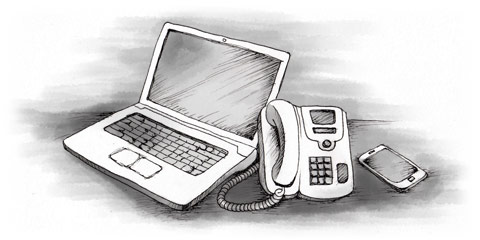Not surprisingly, the internet is hugely popular across the USA. According to statistics from 2010 issued by the International Telecommunication Union , 81% of Americans had Internet access, compared to 79% in the EU according to Eurostat . As of 2012, 89% of the US-American population had access via a wireless broadband subscription (mainly in form of mobile-cellular broadband) and 28% had a fixed broadband subscription.
High Speed Access (DSL, cable and fiber-optic)
High speed access is the most common form of Internet access in the US, dial-up access can hardly be found anymore. DSL, the more common form, is an upgrade to your phone line and usually requires no changes to the wiring at home (although it may require additional computer cabling). Cable and fiber connections may require some additional wiring, although cable Internet almost always works with the pre-installed cable connection you use for watching TV. If you need speeds to support a home office or home business, you can look into Megapath business internet .
A cable connection is more expensive and usually requires a contract that includes cable TV as well. Many contracts even combine cable TV, Internet, and telephone in a package. As a rough guide, prices are:
Monthly fee: $30 to $40 for a DSL connection and $30 to $40 for a cable, fiber, or DSL connection.
Setup fee: There are initial charges to set up a broadband connection, but since the market is highly competitive you can often skip those charges if you sign a one-year contract with your provider.
With the vast amount of internet providers in the USA, it can be hard to choose which one. The service Expat Offers can help by finding the best offers and deals for you and sending them straight to you. Once you choose your service and provider, you have the chance to select either self-installation or installation by a technician (usually for an additional fee). If you choose self-installation (which in most cases isn’t complicated) you should receive your kit in a few days. All companies offer phone and online support to their clients.


